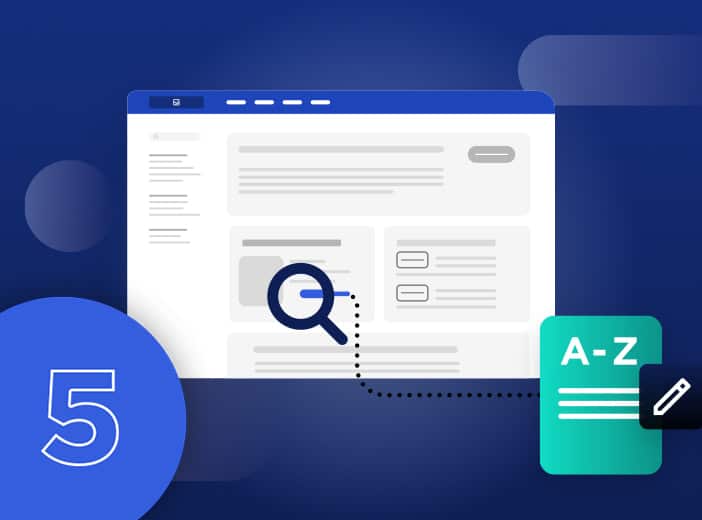Glossary
Business intelligence
Business intelligence uses technology to collect and analyze data, providing deeper insight into operations, and supporting better decision-making.
What is business intelligence?
Business intelligence is the practice of using technology to collect, analyze, transform, and then share business data through reports and dashboards. The aim is to give deeper insight into current and future business operations, enabling better operational and strategic decision-making and improving business performance.
Many technology-based business intelligence tools have been developed to support the business intelligence process, creating a data technology stack designed to gather, enrich/clean, analyze, and publish data in the form of reports and visualizations.
What is the business intelligence process?
Business intelligence covers multiple steps, primarily:
- Data collection – bringing data together from different sources across the organization, including business software, such as CRM, sales, and ERP systems and unstructured data, such as emails.
- Data integration – data from different systems is often in different formats, so it needs to be integrated, consolidated and cleansed to ensure it is in a consistent format, is accurate, and is high quality.
- Data storage – data is then traditionally stored in a single data repository (such as a data warehouse or data lake), or for smaller, departmental solutions a data mart.
- Data analysis – powerful analytics solutions (such as data mining tools) are used to analyze the data, running queries to find patterns or answers in the data. For example, analysis could be used to show total sales over a certain period for a company, broken down by region and product.
- Data reporting – providing the data in usable formats to business managers, such as through reports, data visualizations and dashboards.
What are the roles within a business intelligence team?
In many organizations business intelligence is the responsibility of a specific BI team. Traditionally this was part of IT, but can now be a separate unit, often reporting to the Chief Data Officer. A BI team has the following roles:
- BI manager, responsible for the overall program, including strategy and ongoing operations
- BI architect, responsible for designing the architecture around BI, including data sources and tools
- BI systems administrator, responsible for ensuring that BI systems operate effectively and for fixing any technical issues
- BI analyst, responsible for creating reports and dashboards for business users
What are the benefits of business intelligence?
Business intelligence is critical to helping organizations operate more effectively, out-compete their rivals and better meet the needs of their customers and other stakeholders. Basing decisions on data, rather than gut feel or what has happened in the past leads to more accurate, informed and intelligent decision-making.
Benefits include:
- Better and faster operational decision-making through access to real-time information or historic reports. For example, managers can see which products are selling best, in which regions, and prioritize their manufacture and supply.
- Better strategic planning, through analysis of larger data volumes. Managers can run “what if?” queries that take into account wider factors, such as competitor activity or macro-economic trends and model future scenarios. Technologies such as AI can automate this process, and enable faster analysis of very large datasets.
- Process optimization. Analyzing data enables organizations to spot opportunities to improve processes, making them more efficient and effective.
- Identify issues and opportunities. BI analysis can provide early warning of potential problems, such as a drop in sales or an increase in returns, as well as identifying new opportunities. For example, analysis of customer feedback data might show that 90% of consumers would like to buy a product with a particular feature, opening up a new revenue stream.
- Better customer experience (CX). Being customer-centric is central to competitiveness. Using BI helps businesses get closer to their customers, better understanding their needs and objectives.
What are the challenges to successful business intelligence?
While it delivers clear benefits, particularly for larger organizations, business intelligence programs do face three major challenges:
- Resources. BI requires a range of technologies to collect, analyze, and report on data. Many organizations have therefore invested heavily in their data tech stack, creating data architectures to support decision making. Putting in place a BI team can also be expensive, as many BI skills are in short supply, increasing salaries and limiting availability.
- Accessibility. To drive data democratization, everyone in the business requires access to data. However, in traditional BI programs data analysis and the creation of reports required specialist skills. This meant that business people relied on BI analysts to provide them with reports and dashboards, slowing the ability to make decisions and further pushing up costs.
- Complexity. 40% of decision-makers surveyed by Opendatasoft said their BI tools were over-complex, limiting their use. Even many self-service BI solutions require specialist skills to manage and benefit from, meaning that employees have to rely on the BI team, rather than being able to use them easily themselves.
What is the future of business intelligence?
Business intelligence is changing rapidly, with the latest platforms focusing on reducing costs and increasing usability in four key areas:
- Low code/no code. BI tools are becoming easier to use by non-specialists, with drag and drop/no code interfaces that make it simpler to create visualizations or dashboards.
- Greater self-service. Data democratization means that organizations are looking to make it simpler for everyone to access the data they need, whether it is employees, citizens, customers or other stakeholders.
- Focus on the data experience layer. In the past organizations have invested in collecting data, but many solutions do not allow information to be easily shared in engaging ways. Introducing a data experience platform provides the experience layer needed to complement existing data management solutions and ramp up the use and value of data through simpler access and sharing.
- Artificial intelligence. Data volumes are ever-increasing, making it more difficult for humans to analyze all available data quickly enough. The introduction of AI, either to make decisions or to support human decision making promises to enable business intelligence to provide solutions to more complex problems.
Learn more



